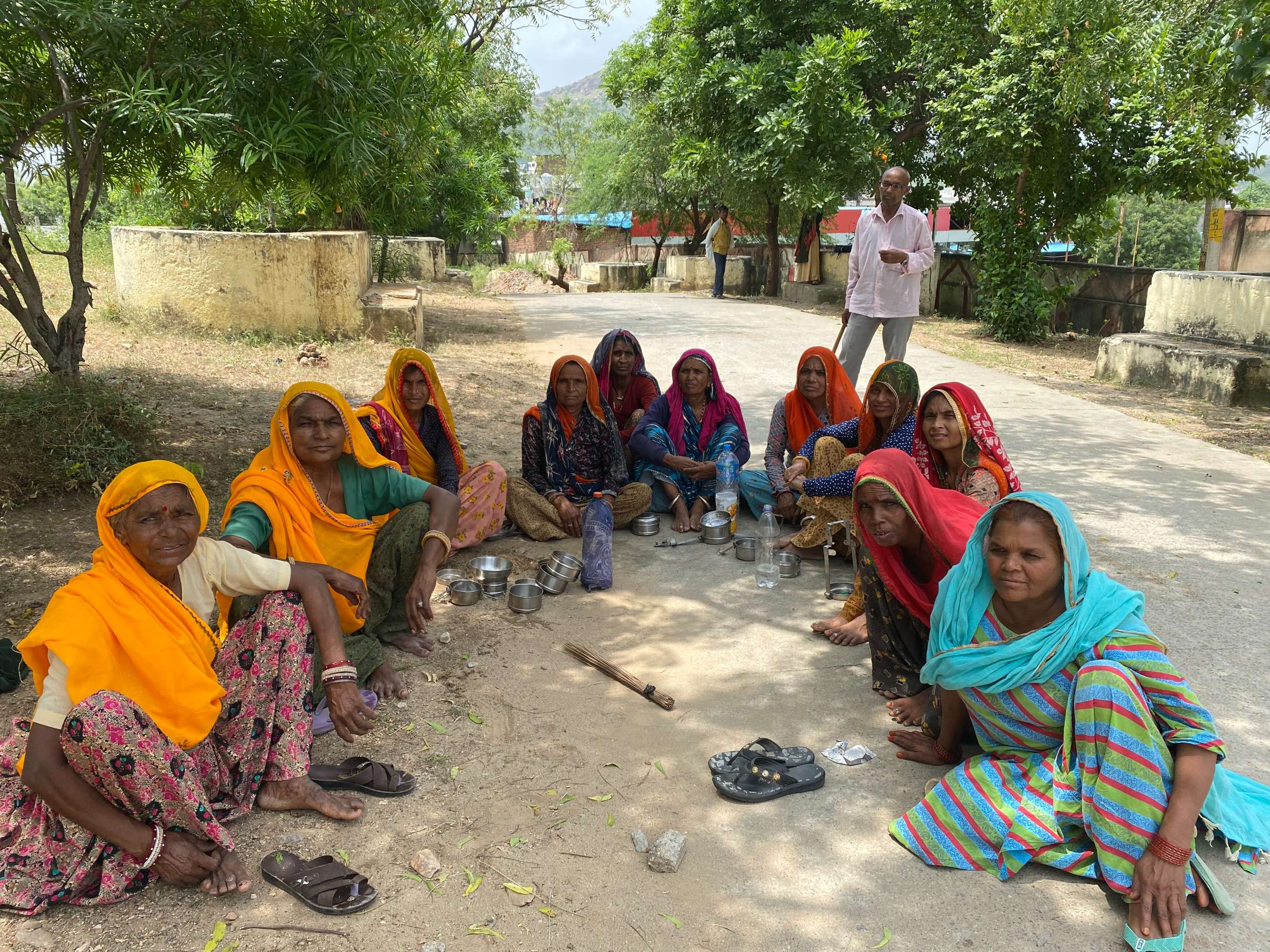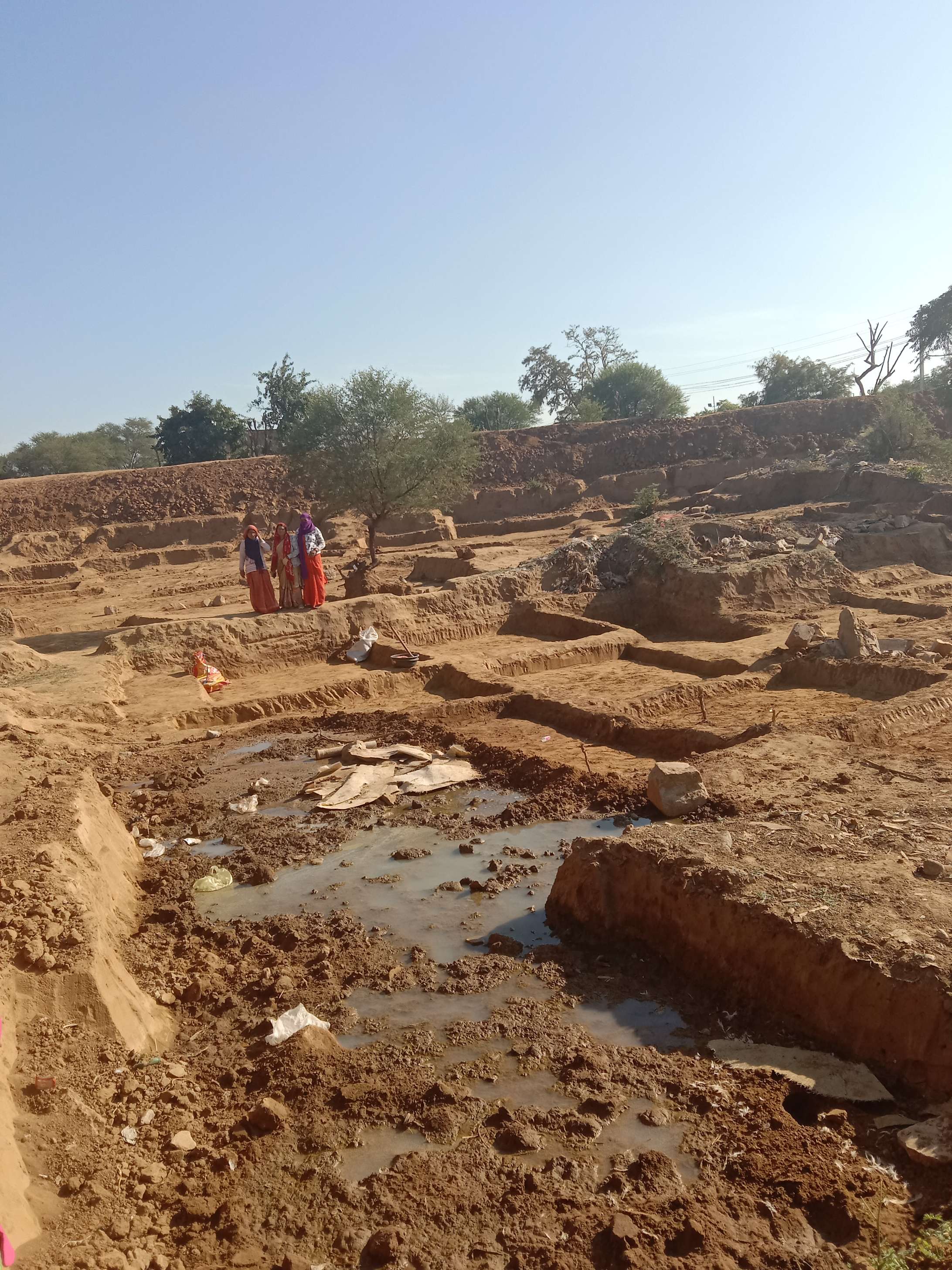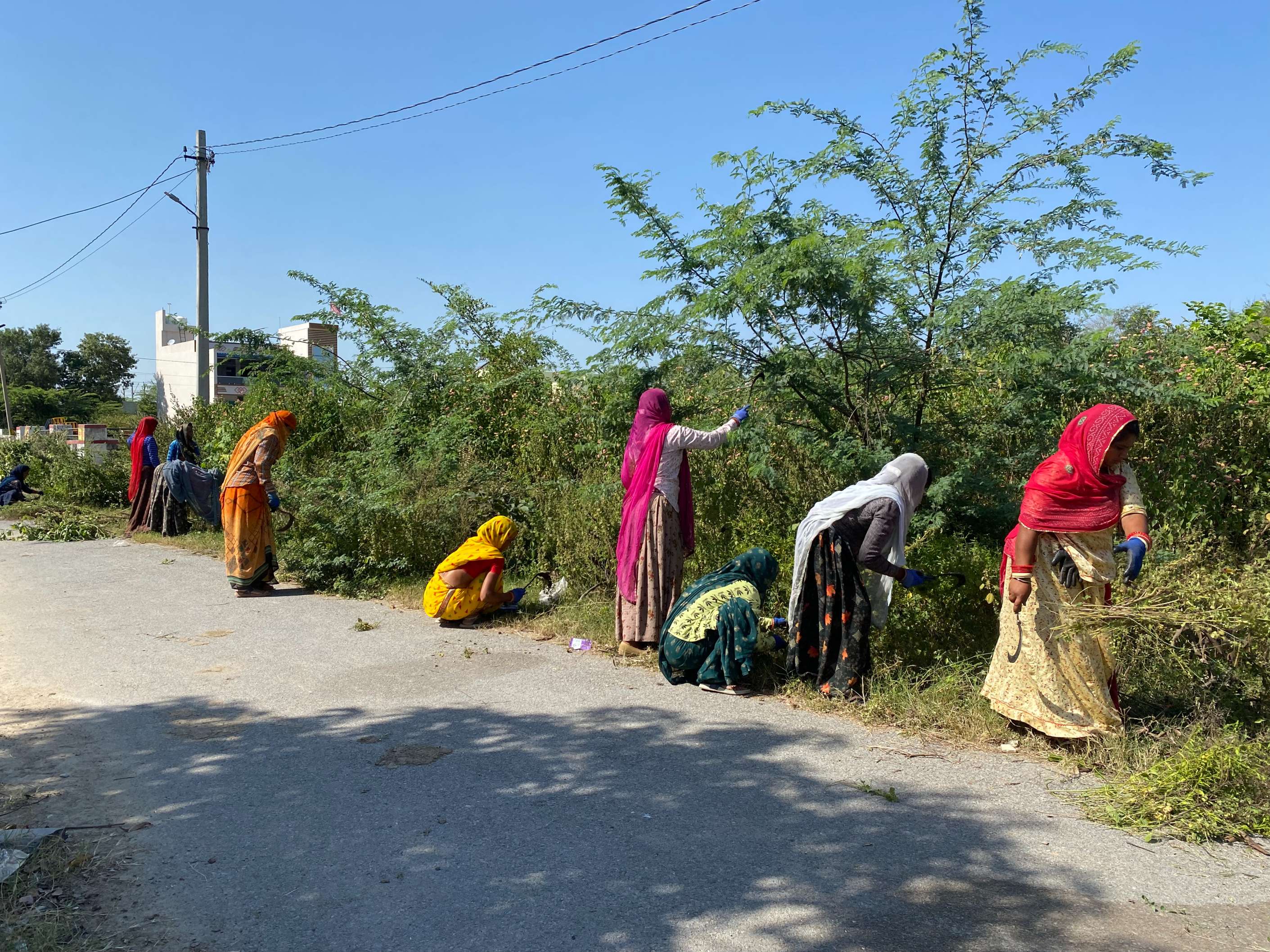Why Urban Employment Guarantee?
Public work guarantee programmes are important components of social protection systems in several countries (
The debate over a national urban employment guarantee programme was vigorous during 2019–2020, including policy proposals as well as views for and against. News reports during the pandemic suggested that the central government was looking at introducing an urban employment guarantee programme to provide basic income security to the millions of urban workers who had lost their jobs (Basole et al.
Except for the Rajasthan programme, which has a legal guarantee and a substantive budget (Rs 800 crore), the others are small-scale schemes with budgets of just about Rs 100 crore or so and no legal status.
More recently, there have been proposals for a Women’s Urban Employment Guarantee Act (Narayanan and Abraham 2024) and a proposal for an urban employment guarantee featured in the Congress party’s 2024 election manifesto. The discussions should continue because such programmes have potential benefits far beyond insurance against shocks such as Covid-19. They can provide income security to daily wage workers, increase women’s participation in paid work outside the home, and improve infrastructure and productivity at the local level.
Meanwhile, several states have launched urban employment programmes on a small scale, which need study so that lessons can be drawn for a national-level programme (United Nations Development Program and Indian Institute of Human Settlements 2023.). These include Kerala’s Ayyankali Urban Employment Guarantee Scheme (the oldest such programme launched in 2010), Odisha’s Urban Wage Employment Initiative, Himachal Pradesh’s Mukhyamantri Shahri Aajeevika Guarantee Yojana, Jharkhand’s Mukhyamantri Shramik Yojana, and the Tamil Nadu Urban Employment Programme. The most recent addition to the list is Rajasthan’s Indira Gandhi Shahri Rozgar Guarantee Yojana (IRGY), which began in September 2022. These are important steps, but they remain limited in scope and intent. Except for the Rajasthan programme, which has a legal guarantee and a substantive budget (Rs 800 crore), the others are small-scale schemes with budgets of just about Rs 100 crore or so and no legal status.
Here, we present findings from a study on Rajasthan’s IRGY using qualitative and quantitative data from the programme’s management information system (MIS) as well as a small field survey. We focus on the role of the programme in promoting the participation of women in the labour market and see if it provides income security to the people participating in the scheme. We hope these findings will move the debate forward.
Indira Gandhi Shahri Rozgar Guarantee Yojana
The IRGY scheme was launched on 9 September 2022 (Iqbal 2022). In July 2023, it was given legal status as a part of the Rajasthan government’s Minimum Guaranteed Income Act (Dey and Roy 2023; NDTV India News, 2023; Government of Rajasthan 2023). 2With the new Act, the number of days of guaranteed work in a year for each household with a job card was increased from 100 to 125. But since rules have yet to be notified, the IRGY website still reports 100 days as the entitlement (https://irgyurban.rajasthan.gov.in/Home/Index) The programme continues under the new government, which came into office late last year. The Centre for Research in Schemes and Policies (2023) carried out a study of the programme for the Rajasthan government.
The wage rates and the type of work are designed to attract mainly informal or casual wage workers. These can be thought of as contributing to the public good of creating urban spaces.
Rajasthan’s identity card at the household level, the Janadhar card, is required to register for a job card under the IRGY. Job card holding households are able to demand work under the programme. As with the MGNREGA, the wage rates and the type of work are designed to attract mainly informal or casual wage workers. These can be thought of as contributing to the public good of creating urban spaces.

The broad categories of work listed in the programme management information system are convergence functions (for example, construction work under the Pradhan Mantri Awas Yojana [Urban] and the Mukhyamantri Jan Awas Yojana), environmental protection work, sanitation-related work, water conservation work (for example, the construction, repair, and cleaning work of rainwater harvesting structures), work to prevent property defacement, service-related work, and other works such as heritage conservation and restoration, as well as tasks such as record keeping in urban local body/municipal council offices.
Dividing the income earned by the number of days worked gives us the effective daily wage under the programme. We find this effective wage to be Rs 203 per day (median Rs 217).
From our survey data, we find the following types of works: planting of trees, cutting grass bushes and trees, watering plants, cleaning roads, parks and schools, collecting garbage, cleaning drains, burning garbage, painting, and deepening of rivers and lakes by digging. We find variations in the kind of work provided under the IRGY, depending on the types and sizes of municipalities. In some places, due to the intervention of civil society organisations and other agencies, additional types of work have been designed and allotted (for example, in Ajmer, managing a solid waste plant).
The wages for unskilled work have been fixed at Rs 259 (Rs 271 for supervisors) per day across the entire state and are the same for different kinds of work. However, the wages that workers receive after working for a 15-day cycle can be lower than this if the quality of work is considered below standard.
Days worked and earnings
Our analysis of the official management information system of the IRGY shows roughly 350,000 unique job cards (that is, households registered). 3Data was scraped from the Job Demand data portal of the IRGY website of the Rajasthan government and reflects the status as at the end of May 2024 (https://irgyurban.rajasthan.gov.in/Reports/FamilyDemand/FamilyDemandSummaryCitizen) Of these, 41% are recorded as having worked at least a day from the time of the programme’s inception. During the last financial year (April 2023 to March 2024), the average number of days worked across all job-card holding households was 33 (median 24). If we restrict the analysis to those households who worked for at least a day, the average days worked rises to 45 (median 37). 4The MIS has a separate entry for days of work demanded and days of work completed. However, there appears to be almost no difference between the two (R2 = 0.99), suggesting that the government may not be keeping track of the work demanded separately.
Across the entire sample (since September 2022 to now), we find the average income earned under the programme by those who had worked at least a day to be Rs 8,823 (median Rs 6,270). Dividing the income earned by the number of days worked gives us the effective daily wage under the programme. We find this effective wage to be Rs 203 per day (median Rs 217). Note that this is lower than the notified daily wage rate, possibly due to the quality of work adjustment mentioned above.
Field survey sample
The findings reported here are based on a small survey of 118 respondents across six districts of Rajasthan, along with detailed interviews of 42 respondents, conducted from August to October 2023. Though the survey was a pilot effort in preparation for a larger survey, and was not intended to be representative of all job card holders in the state, we do have wide geographical coverage. The districts covered are Jaipur, Chittaurgarh, Ajmer, Tonk, Nagaur, and Sri Ganganagar. Across these districts, we visited nine towns, stratified by the sizes of their urban local bodies. Jaipur Greater and Ajmer are Nagar Nigams (municipal corporations); Chittaurgarh, Sri Ganganagar, and Tonk are Nagar Parishads (municipal councils); and Degana, Begun, Niwai, Sadulshahar, and Suratgarh are Nagar Panchayats (municipal boards). Job card holders were randomly selected from the list obtained from the management information system at the time of the survey.

Of the 118 respondents, 114 were women and four were men. Though the programme was not designed specifically for women and any adult member (between the ages of 18 and 60) whose name is on the job card can demand work, there is a widespread perception that the scheme is for women. This is because of two reasons. One is that the Janadhar cards that form the basis of the IRGY job cards list only women members as heads of households (by design). So, by default, job cards are made in the names of women members. A perhaps more significant reason is that the low wages tend to attract more women than men.
Most of the respondents were Hindu (76.3%), and the rest were Muslim (23.7%). Members of Scheduled Caste (SC) communities comprised 46.6 % (55) of the respondents while 45.8% (54) were from other backward classes (OBC).
Going back to our survey sample, 86 (72.8%) had a job card and had worked or were working in the scheme, 28 (23.7%) had a job card but had not worked, and four (3.4%) did not have a job card (despite being listed on the system). Most of the respondents were Hindu (76.3%), and the rest were Muslim (23.7%). Members of Scheduled Caste (SC) communities comprised 46.6 % (55) of the respondents while 45.8% (54) were from other backward classes (OBC). The remaining respondents were either from a Scheduled Tribe (ST) (5.9%) or the general category (1.7%).
We find that 31% of the respondents were engaged in casual wage work as their usual activity status, and 47% were engaged in domestic duties. The rest worked in various home-based piece rate activities (such as beedi rolling) or were own-account workers (petty retail, and the like).
Employment and earnings
Of the respondents, 75% reported not doing any other paid work in the month they had been employed for IRGY work. Of the 25% who did other paid work, the majority (55%) did casual wage work. On an average, they worked for 13 days in that month and earned an income of Rs. 2,340, which gives an implied daily wage rate of Rs 180.
The average number of days worked under the programme up to the survey date was 63 (median 60 days), and all those interviewed said they would like to work more if work was available. The average number of days worked on a given site (that is, for one muster roll) was 13, which resulted in average programme earnings of Rs 2,876. Thus the average daily earning in our sample was Rs 200. This matches well with the calculated daily programme earnings from the management information system that we reported earlier in the article.
Factors such as the lack of consistent work in the private sector, the attraction of working at a women-only worksite, and the proximity of the worksite to home ... seemed to be important factors amongst the respondents.
It should be noted that the reported daily earnings as well as the notified official wage rate under the IRGY are much below the average daily earnings for casual workers in urban Rajasthan estimated from the most recent available Periodic Labour Force Survey (PLFS 2022–23)—Rs 452 a day for men and Rs 300 a day for women. However, the PLFS also shows that while less than 1% of male casual workers in the state earn Rs 200 or less per day, 25% of female casual workers do so. For these workers, the IRGY is likely to be more attractive. Indeed, our sample seems to capture this bottom quartile of women workers, since the reported earnings from private sector casual wage work average Rs 180 in our survey.
The most commonly reported use of the income earned through the programme was for daily household expenses. Around 75% of the respondents reported using the money for this purpose. However, we did find the money being used for education (primarily school fees of children) and healthcare, as well as other purposes (like the payment of monthly instalments on loans).
Women’s work and IRGY
It seems clear that the programme wage rate has been set at a level that is very unlikely to affect the private labour market in general. This is even more likely to be the case in larger towns and cities where the prevailing wage rates are higher. As noted, according to the PLFS, across Rajasthan, only the bottom quartile of urban women casual workers earns the same or less than the average programme earnings. However, factors such as the lack of consistent work in the private sector, the attraction of working at a women-only worksite, the proximity of the worksite to home, and that it is a government scheme (and therefore more respectable and trustworthy) seemed to be important factors amongst the respondents who had chosen to work under the programme.
In particular, in qualitative interviews, we found an interesting self-reinforcing mechanism at work. Being perceived as a programme for women, it has encouraged several women to work as they feel there will mainly be other women at the worksite. The fact that the IRGY sites are dominated by women workers has been used by some women to obtain permission to work from the male members of their household. This, in turn, reinforces the general belief that the programme is meant for women.
Female labour force participation rates in urban India have consistently been low. The IRGY is an intervention in the urban economy that can change this while providing income security at the bottom of the labour market.
For example, a 38-year-old Hindu woman from Niwai, who is now unemployed but has worked in the past as a home-based worker in packaging, noted, “This is the first time I have worked outside the home. My family did not oppose this decision because this programme mostly has women working in it, and they commute together.”
Similarly, a 48-year-old Muslim quilt maker from Niwai said, “When the programme started, my son and daughter-in-law did not permit me to work because they did not want me to do mazdoori. I explained to them that this will supplement our income and that the worksite mostly has women. Then they agreed.”

We can broadly divide women workers in this programme into three categories: those not working elsewhere; those continuing with other work, mostly in home-based industries such as beedi rolling; and those substituting IRGY work for different kinds of work they did earlier, like construction work. Except in the last case, the programme is likely to have a positive impact on women’s participation in the labour market in urban areas of Rajasthan.
Another misconception is that the programme is meant for SC households. This perception is shared by men and women from non-SC castes and sometimes also by SC women working or willing to work in the scheme.
Both the gender and caste aspects of the way the programme is perceived are captured in the following remark by a 46-year-old Muslim woman who works as tailor in Chittaurgarh. “My family members told me after I got registered under the scheme that working on roads is the work done by people from Scheduled Castes; this is not good work and you should not be doing it. Then I explained to them that only women workers come here to work and this convinced them. They allowed me to come and work here.”
Conclusions
Female labour force participation rates in urban India have consistently been low. A programme such as the IRGY is an intervention in the urban economy that can change this while providing income security at the bottom of the labour market. As the list of works shows, a well-run programme can also create and maintain much-needed local public goods. But, as it stands, the programme is not very well known and the number of days of work it provides is much less than what the guarantee is, as well as less than what workers demand.
In our conversations with government officials and workers, it seems that apart from the initial declaration in the newspaper and billboards, the state government did not conduct a widespread campaign and job card registration drive. People received information through local ward members, leaders, or civil society organisations working in their areas. As a result, overall job card registrations are low.
But we found that the programme was popular amongst those who had worked in it. Even with low registration and limited work being made available, women workers are ready to work, though there is a demand for higher wages and more days of work. Interestingly, the perception that the programme is mainly for women seems to have relaxed some of the constraints around the participation of women in work outside the home. Based on the survey results, we feel that there is a need for continuing the programme, along with improving its implementation, and extending its reach through more widespread campaigns and job card registrations. It would be good to include more kinds of permissible works as well.
Finally, it is important to note that the Janadhar card requirement is now a barrier for recent migrant workers to work under the programme. There are ways in which such barriers can be relaxed to make the programme more inclusive 5Some possible ways are “accepting rent receipts, utility bills, and other documents apart from ownership documents as proof of residency in urban areas” or “by considering an expanded list of official documents for registration like non-local Aadhaar, voter identity cards, and ration cards. Additionally, proofs from non-state actors such as unions, community-based organisations (CBOs), and platforms can be considered as well for the purpose of identification” (Bhan et al. 2024.). (Bhan et al. 2024).
In sum, Rajasthan’s IRGY is an important step in building an effective social protection architecture for urban informal workers. We hope that the lessons learnt from this and other such programmes can be used at the national level in the time to come.
Shiuli Vanaja, Niruj Deka and Amit Basole are with Azim Premji University.
Acknowledgements: Shaikh Parveen Chesthi (field coordinator and supervisor); field enumerators Vijay Laxmi Tasera (Tonk), Mamta Menariya (Chittaurgarh), Divya Menaria (Chittaurgarh); Anand Felix and his team from the Centre for Advocacy and Research (CFAR), Ajmer, Rajasthan; Vrashali Khandelwal, Sukrit Nagpal, Shriya Anand, Gautam Bhan from the Indian Institute for Human Settlements (IIHS), Bengaluru; Rakshita Swamy from the Mazdoor Kisan Shakti Sangathan (MKSS); Paresh Pandya, Devendra Joshi and their team from Azim Premji Foundation, Tonk Rajasthan; and Ashish Gupta and their team, Azim Premji Foundation Chittaurgarh, Rajasthan.












Breaking Patriarchy